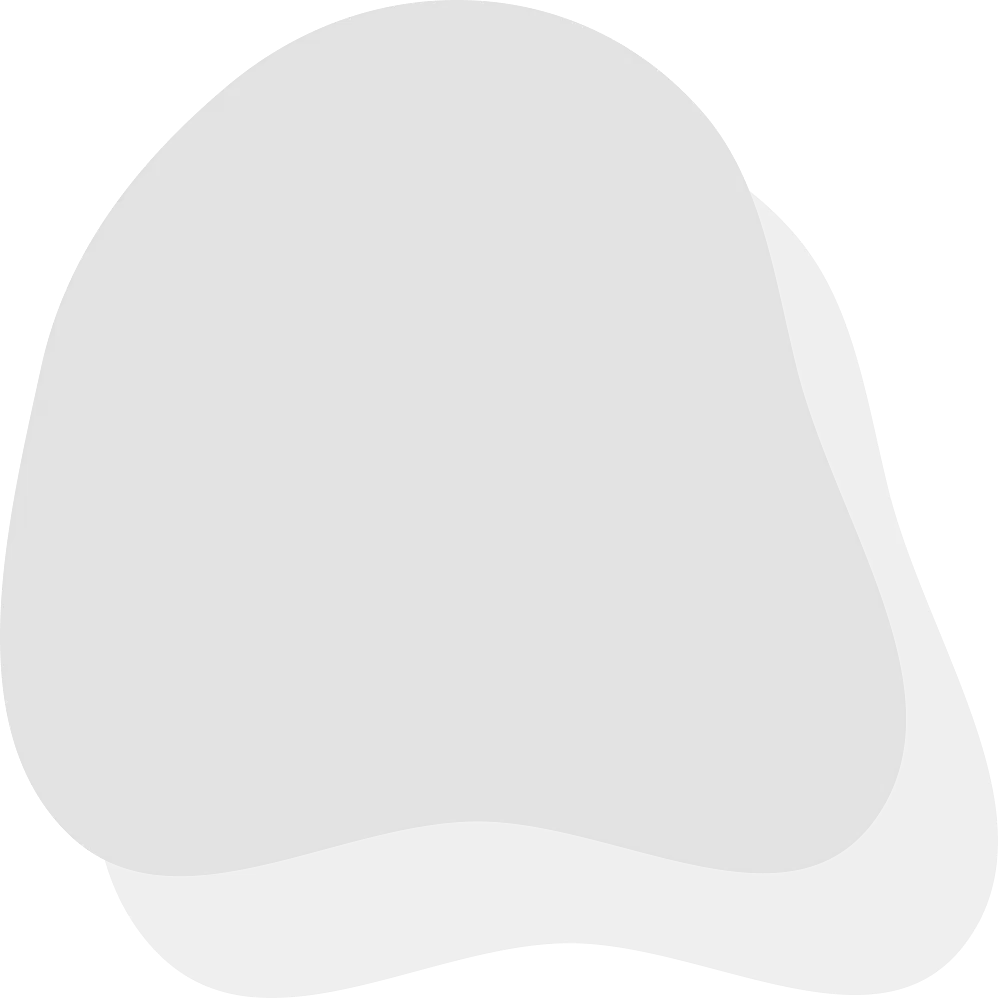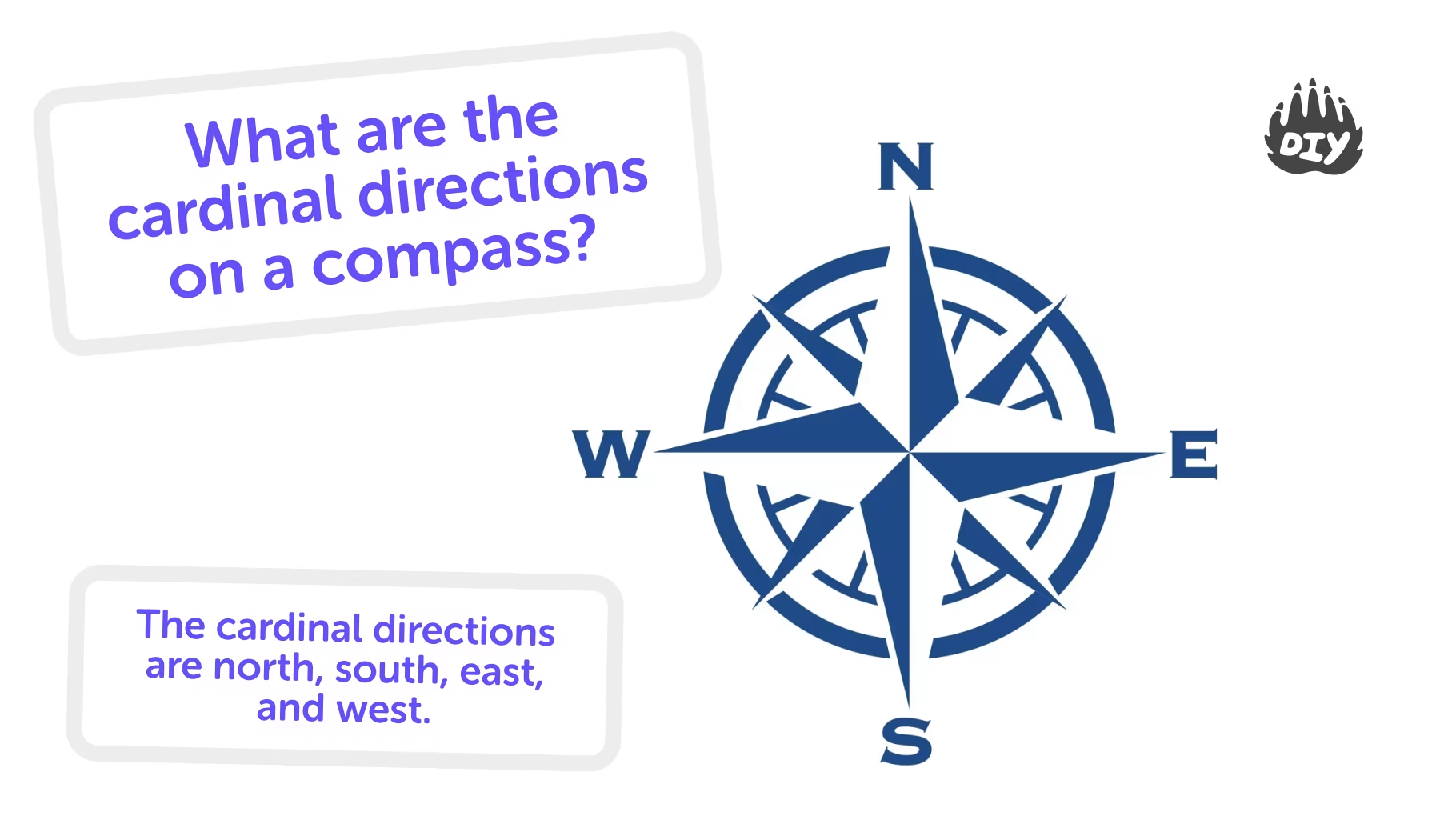Cardinal directions are the four main compass points: north (N), east (E), south (S), west (W). On a compass, they sit at 0°/360°, 90°, 180°, 270°. The halfway points NE, SE, SW, NW are called intercardinal directions. Use simple memory tricks (like “Never Eat Soggy Waffles”) and a compass rose to practice.
Have a directions question for homework? Paste it into DIY’s AI Homework Helper for a friendly explanation and a 3-question practice quiz. → Try AI Homework Helper
What are the cardinal directions?
The cardinal directions are the four main directions on a compass: north, east, south, west. Kids meet them first on maps and GPS and in real life when finding a classroom, a playground, or the way home.
Where are they on a compass (and map)?
North (N): 0°/360°
East (E): 90°
South (S): 180°
West (W): 270°
These angles are called azimuths the degree position around the compass circle. On most maps, north is up, east is right, south is down, and west is left.

How to Find the Cardinal Directions
On a compass, the needle always points north.
On most maps, north is at the top.
The other directions line up around north: south is opposite, east is right, west is left.
👉 Ask the DIY.org homework helper tool: “How do I use a compass to find north?”
Memory tricks kids actually remember
Memory Trick | How to Use It |
Never Eat Soggy Waffles (N-E-S-W clockwise) | Remember the order of the four main directions around the compass: North → East → South → West. |
Sunrise/Sunset | The sun rises in the east and sets in the west —face sunrise to find east, then turn clockwise to locate the others. |
Compass Rose | Trace the big points (N, E, S, W) first, then add the smaller ones (NE, SE, SW, NW). Pair with a printable compass rose for practice. |
Try it: 3 fast practice games
Turn-and-point: Stand outside, face north, turn 90° to face east, call out each turn.
Treasure tags: Hide 3 items and give clues (“10 steps north, 5 steps west”).
Map match: On a simple map or school layout, draw arrows for N/E/S/W and label nearby places.
Ask the Helper to make a 5-question “compass rose” quiz and a one-page study sheet. → Make a Quiz with AI
Real-world connections
Maps & GPS: Directions help you read routes and follow turns.
Weather & science: Winds or stars are often described by direction (e.g., “NW wind”).
Hikes & field trips: Basic bearings keep groups oriented.
Common mix-ups (and quick fixes)
Mixing east/west: Think “East = Earth’s sunrise side.”
Starting at the wrong point: Always locate north first on the map or compass then rotate from there.
Forgetting the halves: Mark NE/SE/SW/NW lightly on your worksheet or compass rose.
Cardinal directions vs. “due” directions
“Due north,” “due east,” etc., are just precise ways to say the four main points with no tilt toward the sides.
Compass Points & Degrees
Direction | Abbrev. | Degrees (azimuth) |
|---|---|---|
North | N | 0° / 360° |
East | E | 90° |
South | S | 180° |
West | W | 270° |
Northeast | NE | 45° |
Southeast | SE | 135° |
Southwest | SW | 225° |
Northwest | NW | 315° |
Fun Facts About Cardinal Directions
The word “orient” comes from the Latin word for east.
Some ancient maps placed east at the top, not north.
The North Star has guided travelers for centuries.
In China, compasses were first used over 2,000 years ago.
👉 Try asking the AI Homework Helper: “Why is north usually at the top of maps?”
Tips for Parents Helping With Geography Homework
Use a real compass: Show kids how the needle always points north.
Play games: Hide an object and give directions like “five steps east.”
Link to nature: Go outside and point out where the sun rises and sets.
Encourage practice: Let the AI Homework Helper generate quizzes about directions.
Frequently Asked Questions about Cardinal Directions
What are the cardinal directions?
North, south, east, and west.
Why are they called “cardinal”?
Because they are the main, or “primary,” directions.
What are the in-between directions?
Northeast, northwest, southeast, southwest called intermediate directions.
Which way does the compass needle point?
North, because of Earth’s magnetic field.
Do all maps show north at the top?
Most do, but not all some old maps used east at the top.
Can you find directions without a compass?
Yes, by using the sun, stars, or landmarks.
Are there more than four directions?
Yes there are intercardinal and secondary intercardinal directions for in-between angles.
Is north always “up” on a map?
Most modern maps are drawn that way, but some cultural maps orient differently. For beginners, assume north is up unless the map says otherwise. National Geographic Education
What do the letters N, E, S, W stand for?
North, East, South, West the four cardinal points. You’ll see them on a compass rose and on most map legends.
Master the Cardinal Directions
The four cardinal directions north, south, east, and west are the building blocks of navigation. From maps to GPS apps, they guide us through the world.
For kids, learning directions makes geography fun and practical. And with the DIY.org homework helper tool, they can practice safely, take quizzes, and master navigation step by step.



